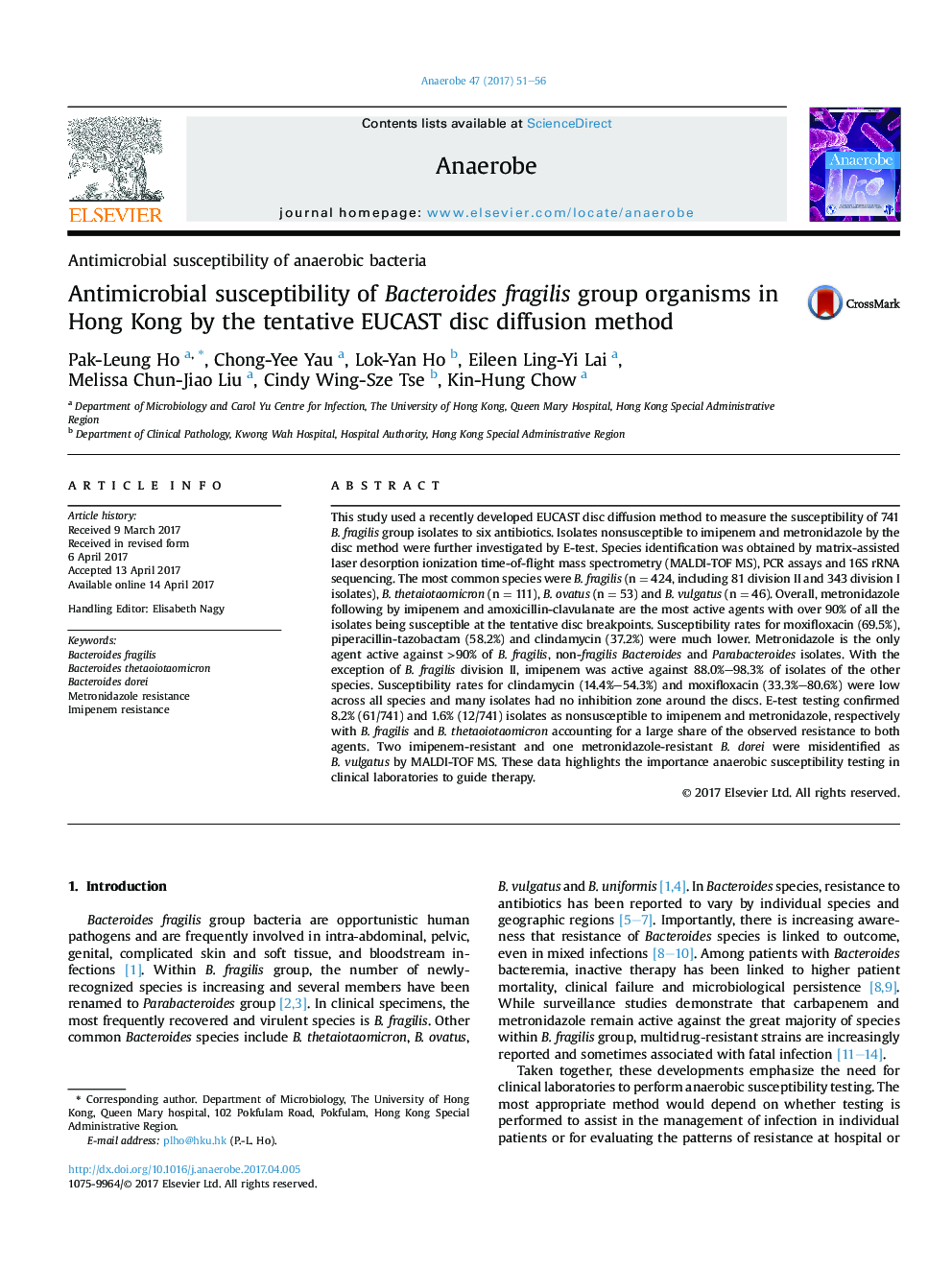| Article ID | Journal | Published Year | Pages | File Type |
|---|---|---|---|---|
| 5671307 | Anaerobe | 2017 | 6 Pages |
â¢Resistance of Bacteroides fragilis group bacteria is linked to outcome.â¢Antimicrobial susceptibilities of 741 B. fragilis group bacteria were assessed.â¢Metronidazole is the only agent active against >90% of B. fragilis, non-fragilis Bacteroides and Parabacteroides isolates.â¢Except for B. fragilis division II, imipenem was active against 88.0%-98.3% of the other subgroups.â¢Susceptibility rates for clindamycin and moxifloxacin were low for many species within B. fragilis group.
This study used a recently developed EUCAST disc diffusion method to measure the susceptibility of 741 B. fragilis group isolates to six antibiotics. Isolates nonsusceptible to imipenem and metronidazole by the disc method were further investigated by E-test. Species identification was obtained by matrix-assisted laser desorption ionization time-of-flight mass spectrometry (MALDI-TOF MS), PCR assays and 16S rRNA sequencing. The most common species were B. fragilis (n = 424, including 81 division II and 343 division I isolates), B. thetaiotaomicron (n = 111), B. ovatus (n = 53) and B. vulgatus (n = 46). Overall, metronidazole following by imipenem and amoxicillin-clavulanate are the most active agents with over 90% of all the isolates being susceptible at the tentative disc breakpoints. Susceptibility rates for moxifloxacin (69.5%), piperacillin-tazobactam (58.2%) and clindamycin (37.2%) were much lower. Metronidazole is the only agent active against >90% of B. fragilis, non-fragilis Bacteroides and Parabacteroides isolates. With the exception of B. fragilis division II, imipenem was active against 88.0%-98.3% of isolates of the other species. Susceptibility rates for clindamycin (14.4%-54.3%) and moxifloxacin (33.3%-80.6%) were low across all species and many isolates had no inhibition zone around the discs. E-test testing confirmed 8.2% (61/741) and 1.6% (12/741) isolates as nonsusceptible to imipenem and metronidazole, respectively with B. fragilis and B. thetaoiotaomicron accounting for a large share of the observed resistance to both agents. Two imipenem-resistant and one metronidazole-resistant B. dorei were misidentified as B. vulgatus by MALDI-TOF MS. These data highlights the importance anaerobic susceptibility testing in clinical laboratories to guide therapy.
